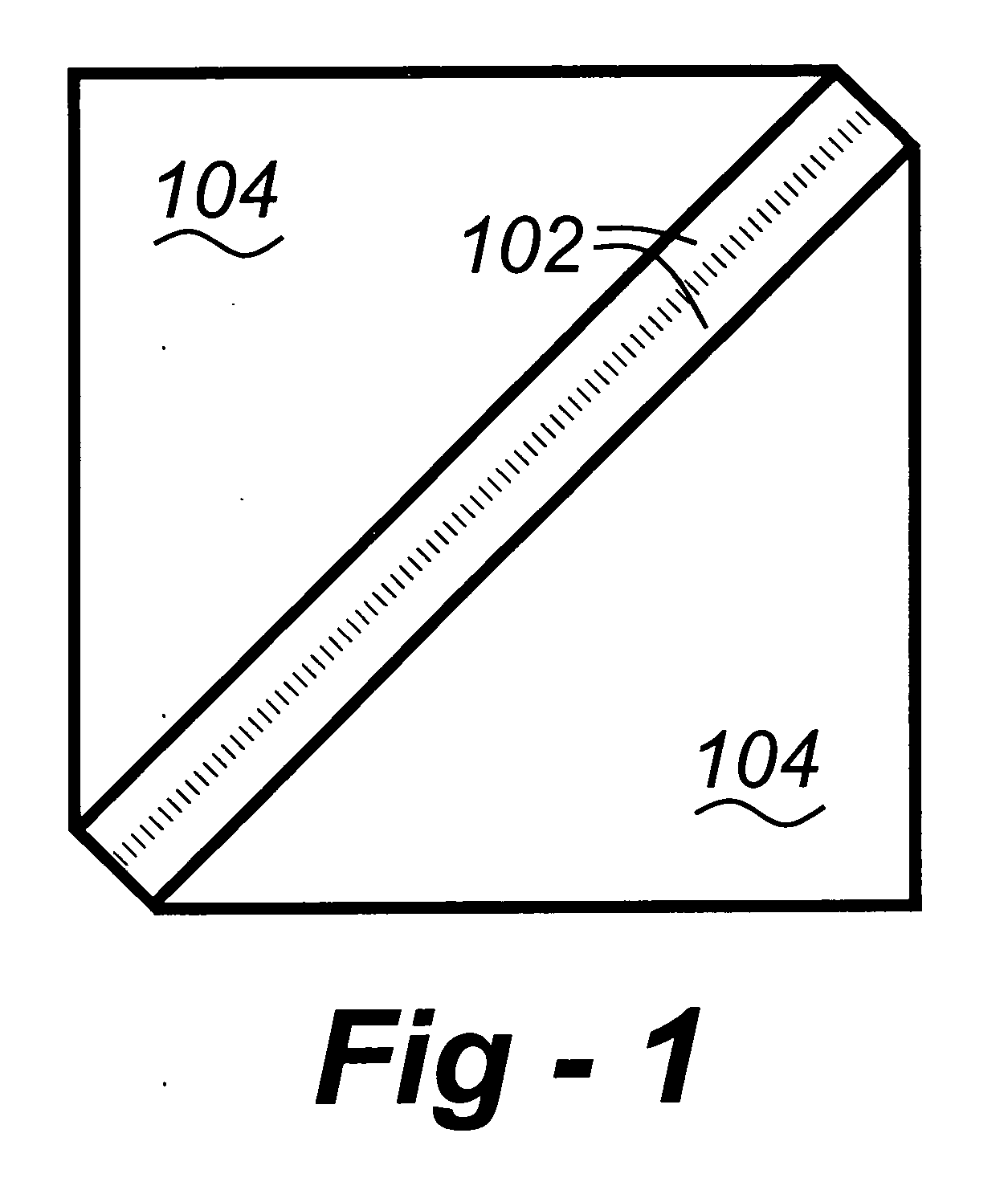Thermally stabile GRISMs
- Summary
- Abstract
- Description
- Claims
- Application Information
AI Technical Summary
Benefits of technology
Problems solved by technology
Method used
Image
Examples
Embodiment Construction
[0006] This invention improves upon existing GRISM configurations through the use of different substrate and prism materials to improve the thermal stability. The preferred embodiment, shown in FIG. 1, resides in a generic transmission GRISM wherein the transmission grating is constructed on a flat fused silica substrate with a flat fused silica cover (102). Fused silica is the transmissive optical substrate material with the lowest available thermal expansion coefficient (though not zero), thus keeping the grating spatial frequency stable with temperature.
[0007] The prisms (104) preferably use BK-7 or other suitable glass which has a much lower thermal coefficient of refractive index than fused silica, thus keeping the total angular dispersion of the grism assembly significantly more stable over temperature than would either an all-BK7 assembly or an all-fused-silica assembly.
[0008] The FS / BK7 construction could be used to improve the thermal stability of existing and yet-to-be d...
PUM
 Login to View More
Login to View More Abstract
Description
Claims
Application Information
 Login to View More
Login to View More - R&D
- Intellectual Property
- Life Sciences
- Materials
- Tech Scout
- Unparalleled Data Quality
- Higher Quality Content
- 60% Fewer Hallucinations
Browse by: Latest US Patents, China's latest patents, Technical Efficacy Thesaurus, Application Domain, Technology Topic, Popular Technical Reports.
© 2025 PatSnap. All rights reserved.Legal|Privacy policy|Modern Slavery Act Transparency Statement|Sitemap|About US| Contact US: help@patsnap.com


